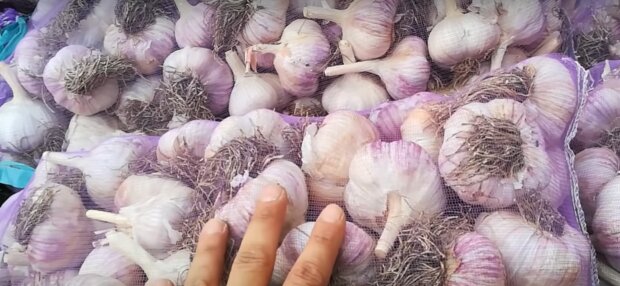As of mid-December, the price of garlic has confidently surpassed 200 UAH per kilogram, setting a new record for the country. This marks a significant increase, as even during the pandemic, prices were considerably lower.
Before the war, garlic was cultivated in large quantities, but currently, there is a shortage in the domestic market, and high-quality imports are too expensive to maintain regular supplies.
Sergey Shish, head of the "Euroshock" group, shared that finding even two tons of commercially viable garlic from local producers has become a rarity. There is no consistent large-scale production, and the little that is harvested comes from private gardens, often unsuitable for retail or industrial use.
The sharp increase in prices is attributed to a combination of factors. Firstly, the demand for garlic has surged in European countries as more immigrants arrive from regions where garlic plays a key role in cuisine. In countries like Germany and Austria, the price per kilogram hovers around 6 euros, and in some places, it reaches up to 20 euros.
Additionally, there is an increasing gap between supply and demand. Spain, the main producer of garlic in the EU, has depleted its stocks due to adverse weather conditions, rising labor costs, and logistical challenges.

Other suppliers, such as those from South America, have also exhausted their inventories, leading to even higher price increases. Moreover, European suppliers are facing fines for exceeding import limits on Chinese garlic, further contributing to the price rise.
As for Ukraine, the import of garlic has become prohibitively expensive, and local production is far from sufficient to meet demand. Occasionally, small batches are exported to Japan, but this is not common.
Data from the State Statistics Service indicates a 15% reduction in the area of land allocated for garlic cultivation over the past four years, with approximately 21,000 hectares currently in production. Most of these are managed by small family farms, and some wholesalers believe that official statistics may overestimate the actual area of garlic production.
Shish explained that this year he has not seen a single garlic field larger than two hectares, whereas before the war, there were fields ranging from 50 to 70 hectares. One of the main obstacles to garlic cultivation in Ukraine is the need for a large workforce, as no specialized equipment for planting, sorting, or harvesting garlic has been imported in the last five years.